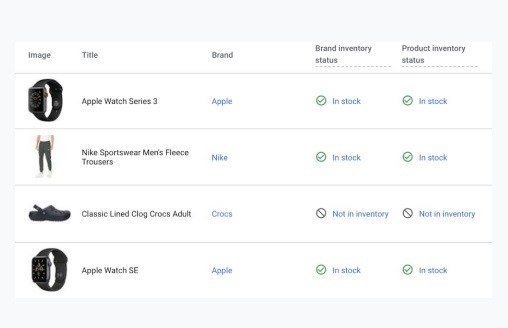[In Partnership with Google]
The online retail market is booming, and with peak shopping days just around the corner, competition is fierce.
How competitive?
- Last year, eCommerce retail had its biggest peak season ever, with global digital sales growing by 50% to a whopping $1.1 trillion.
- Additionally, Google reports that retail searches in the fourth quarter grew at a rate over 3x higher than the same time last year.
- Holiday retail peak is anticipated to continue growing, with eCommerce alone forecast to rise 11.3%.



In order for marketing teams and eCommerce brands to capitalize on the biggest shopping days of the year, you need to look at key shopping trend reports and data, and adapt your holiday PPC marketing strategy accordingly.
In this full holiday shopping data report, we’ve partnered with Google to show you everything you need to know before planning your holiday PPC marketing strategy.
Additionally, we have included some important 2021 PPC optimization hacks which are vital in ensuring your eCommerce ads capitalize on big shopping days and trends.
Peak eCommerce Retail Shopping Days 2021
To optimize sales over the holiday season, it’s important to understand which big shopping days you’re gearing your promotional efforts and marketing to.
These include:
- Singles’ Day
- BFCM (Black Friday & Cyber Monday weekend)
- Pre-holiday shopping peak

However, as any eCommerce marketer knows, peak season shopping behavior and trends change year on year and differ from niche to niche and brand to brand.
Generally speaking, though, as competition increases, so does the need to ensure you are building awareness very early on so you can compete for both online sales and offline market share, too.
Why? Despite the 27.6% global rise in eCommerce in 2020, more than half of shoppers (66%) still say they plan to shop in-store this holiday. This means if you’re not an omnichannel brand, you’ll need to work harder (and prepare better) to cash in on the later pre-holiday peaks.
Pro Tip: Capitalize on All Shopping Days by Going All-In with PPC Automation
In terms of PPC, search, and digital marketing, competition for peak shopping days is enormous. This means it’s vital for marketing teams to pay attention to campaign metrics and be able to tweak them in real-time.
However, this is virtually impossible over the peak shopping season due to the sheer volume of competition and the number of campaigns you’re likely to be running.
The best solution to ensure you can manage an increased PPC campaign strategy and optimize it in real-time to provide the best ROAS is using a PPC management software & automation tool, such as Traffic Booster, which was designed specifically for eCommerce retailers.
[embedded content]
You can find out more here.
Optimum Peak Sale and Search Timelines 2021
Yes, Black Friday and Singles’ Day represent concentrated sales periods and the highest points of consumer demand. However, consumer interest in these peak days starts well ahead of time.
Here are two key findings from Google’s peak season report:
- Interest in deals, gifts, and last-minute buys triggers throughout the peak season, up to and even during the holidays.
- Additionally, queries for Black Friday are anticipated to start in October and span 10 weeks into December.

In a nutshell: your target audience is more than likely already starting to search for products in preparation for 2021’s peak shopping days. In fact, larger retailers have been viewing Black “Friday” as a week-long event, not one specific peak shopping day, for the last couple of years.
If you look at shopping behavior and search trends from last year, there’s a big chance that holiday shopping has already begun. For instance:
- By as early as November 2020, “Christmas wrapping paper” searches were up by 80% from previous years.
- As of the end of August 2020, 27% of US shoppers said they had already started their holiday shopping.
- As of June 2021, Google reported that searches for “best affordable” had grown globally by over 60%, just before entering the fourth quarter.
- Generally, “fashion online shopping” searches in 2020 were up 600% year over year.
4 Holiday Shopping and Marketing Trend Predictions [2021]
Next, let’s look at the four key holiday shopping and marketing trends we expect to see this holiday season based on eCommerce and search trends.
Holiday Shopping Trend #1: Online Sales Will Continue to Surge
As discussed earlier, global digital sales grew by 50% to a whopping $1.1 trillion in 2020. Simply put, the pandemic pushed eCommerce growth to record-breaking levels.
But will the surge in online sales continue into 2021? We predict that although eCommerce retail may see a small plateau in relation to online sales revenue, it isn’t likely to drop to pre-pandemic figures.
Let’s look at some fundamental 2021 shopping behavior and sales stats for US consumers:
- Earlier shopping trends mean more online shopping. One survey found that as many as 34% of consumers intended to start their holiday shopping by Labor Day, meaning Black Friday is no longer a one-day, in-store event. Instead, it is spread out over time, with many shoppers opting to start their holiday shopping earlier.
- As many as 78% of consumers say they plan to do some sort of Black Friday shopping online.
- One survey found that although 43% of consumers plan on doing their shopping at brick-and-mortar stores – up by 9% in 2020 – as many as 57% say they still plan to do most of their holiday shopping online.

Take a look at “buy online” search trends over the last 12 months. As you can see, it has remained pretty consistent from 2020 to 2021 to date.

[Source: Google Trends]
However, to really capitalize on growing online sales, brands will need to create a more streamlined omnichannel shopping experience. This brings us to the next 2021 peak season shopping behavior and sales trend.
Holiday Shopping Trend #2: Omnichannel Product Discovery Will Drive Sales
Waiting until peak season to introduce potential customers to your brand and products will kill your revenue potential this holiday season. Let’s look at some product discovery data:
- 85% of people will take action within 24 hours of discovering a new product
- It takes about eight touchpoints, on average, to get a shopper to convert
- 63% of shopping journeys begin online
- According to Google, nearly three out of four people say they are always on the hunt for new products
Ultimately, there are more consumers spending more time online at the consideration stage, and they are doing it earlier. When it comes to product discovery for the 2021 holiday shopping season, it’s vital that you start early (now!) and vary your channels.
In other words, you need to ensure you are not only everywhere that they are, but have also created an omnichannel experience to ensure you are moving them along from discovery to conversion.
A robust eCommerce marketing strategy that combines a variety of channels will form the foundation of your omnichannel shopping experience. This should include:
- Google ads for eCommerce
- Facebook ads for eCommerce
- Microsoft ads for eCommerce
- TikTok ads for eCommerce
- Email marketing
- On-store promotions
You will also need a wide variety of campaigns for each channel that target different potential shoppers at different touchpoints.
Let’s look at Google specifically.
If you’re an omnichannel eCommerce brand, your eCommerce PPC campaign strategy for Google Ads should look something like this:

Important Note: Google Search (and Smart Shopping) is more often than not the first touchpoint in terms of product discovery across your buyer’s entire journey. This means it should be the first point of call when setting up your campaigns for peak season shopping days.

Simply put, you need awareness (brand and product discovery) campaigns for each channel by October at the latest, as well as strategic remarketing campaigns across all your channels. This brings us to the next holiday consumer and marketing trend for the 2021 peak season.
Holiday Shopping Trend #3: Your Consumer’s Holiday Shopping Journeys (From Awareness to Conversion) Will Start Early
As we mentioned, more consumers are starting their consumer shopping earlier each year, and peak shopping dates should be looked at as extended periods instead of specific days. Yes, Black Friday sales will spike on Thanksgiving around the world.
However, many of these consumers will have discovered and/or engaged with brands much earlier. If your eCommerce brand niche has a particularly long sales journey, your shoppers are likely to have made first contact with your brand as far back as nine weeks before Black Friday Cyber Monday.
Additionally, according to Kate Ellsworth (executive editor of commerce content at Reviewed), there are three key things driving US consumers to do their holiday shopping even earlier this year:
- Shipping delays and cost uncertainties. Due to the US Postal Service’s announced rate increase which takes effect in October 2021, it’s expected that UPS and FedEx will follow suit. This could mean shoppers will try to do most online shopping before the expected rate increases, or that they’ll look for deals to mitigate them.
- Delta variant uncertainty is high as consumers face a second pandemic holiday season.
- Supply chain issues with electronics, which are expected to continue into 2023, are still a worry for many holiday shoppers.
The latter is a big concern for electronic shoppers specifically.
PlayStation 5, for example, sells out in minutes, and they are likely to be impossible to find during peak shopping seasons. When you consider “where to buy PS5” is a top 2020 search term in the US, we know that demand is still high, and consumers are not likely to wait for sales for these and other consoles this year.

[Source: Google Trends]
Pro Tip: Go All-In on Cyber Week Pre-Sales
Here’s the thing. Consumers are aware of the electronics inventory scarcity issues. This means they are already looking for early pre-sales that will enable them to “get-in” before a product sells out, while still getting the advantage of a deal.
And while they are hunting for electronic pre-sales, it doesn’t mean they aren’t on the lookout for other pre-sales as well. We know that Amazon Prime Day is usually around the 15th of October, which is when pre-sales search fever begins to peak.
Holiday Shopping Trend #4: Video Marketing Will Take Center Stage
We all know the power of video when it comes to eCommerce marketing. But some of the recent stats in terms of product discovery are increasingly positive.
Like this one: A recent study found that 90% (yes 90!) of people say they discover new products on YouTube.
According to Anaïs Hayes, Head of Brand Innovation at Google, video is a powerful tool in turning awareness into consideration.
Video content was a huge booster last year, and this year it’s expected to elicit even more engagement. Here is just one of the top 2021 YouTube video ads from Gymshark. It got 1,457,536 views.
[embedded content]
Reaching potential customers at the initial consideration stage is vital in ensuring peak season sale success, and video is set to be one of the most influential ways to do that this holiday season.
Tools such as Google’s Maximize Lift, which shows products to new potential customers with high buying intent, can lower cost per acquisition by up to 17% and improve Google ROAS overall.
How to Find Peak Season Shopping Trends per Niche
Finally, when it comes to narrowing down peak season eCommerce shopping and marketing trends, you want to be sure you are also diving deep into your specific niche and market.
Google offers four powerful hacks and tools that eCommerce retailers and marketers can use to analyze peak shopping trends for their niche.

Let’s take a closer look at each.
1. Best Sellers Report
The Best Sellers report shows you the most popular brands and products.

If you currently carry them in your product feed, it can help you pinpoint seasonal trends and identify products that would benefit from increased budgets or bids.
2. Price Competitiveness Report
The Price Competitiveness report shows an average price across competitors for the products you sell.

This can help you understand the price at which other retailers are successfully attracting clicks, as well as aggregated metrics on benchmark prices.
3. Demand Forecasts
Demand Forecasts show upcoming trends which are predicted to start over the next 180 days.

It will also show when market demand is likely to start increasing, by how much, and for how long. It will also let you see what is expected to cause the increase and how you can best capture it.
4. Google Trends
To understand how often users search for specific queries or topics and compare different search terms, time periods, and regions, use Google Trends.

This data can give insights into changes in demand, peak periods for certain queries, and growing or declining trends.
Final Thoughts: If Your Peak Season Campaigns Aren’t Set Up Yet, You’re Well Below the Curve
There’s no beating around the bush: If you haven’t set up your holiday season marketing strategy yet, you’re already missing out on potential shoppers.
Why?
Let’s recap some critical peak season shopping data:
- eCommerce online sales are said to rise a further 11.3% this year.
- Consumers start searching for holiday products from as early as August, and it takes about eight touchpoints, on average, to get a shopper to convert. Many of these shoppers start their journey on Search.
- Due to supply shortages, shipping delays, and Covid uncertainties, 78% of consumers will do most of their peak shopping early and online.
- Consumers are looking for early deals, with an emphasis on deals.
- Early Best Sellers, Price Competitiveness, Demand Forecast, and Google Trends reports will help you get a jump on marketing trends for your niche.
But it’s not all doom and gloom for marketers.
There are two ways you can set up a comprehensive marketing strategy in time to boost online sales today.
- DIY It: Follow this Google PPC Holiday Marketing Strategy [Coming soon]
- Harness the Power of Automation and Real-Time optimization: Invest in PPC Management Software & Automation for eCommerce


Nicole Blanckenberg
Nicole is a content writer at StoreYa with over sixteen years experience and flair for storytelling. She runs on a healthy dose of caffeine and enthusiasm. When she’s not researching the next content trend or creating informative small business content, she’s an avid beachgoer, coffee shop junkie and hangs out on LinkedIn.
Comments
comments
Powered by Facebook Comments






